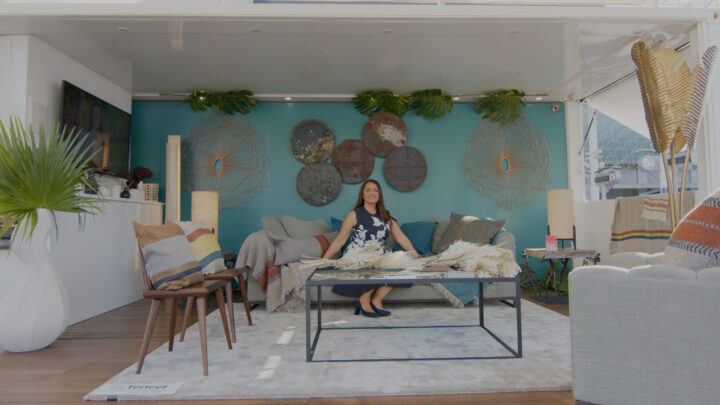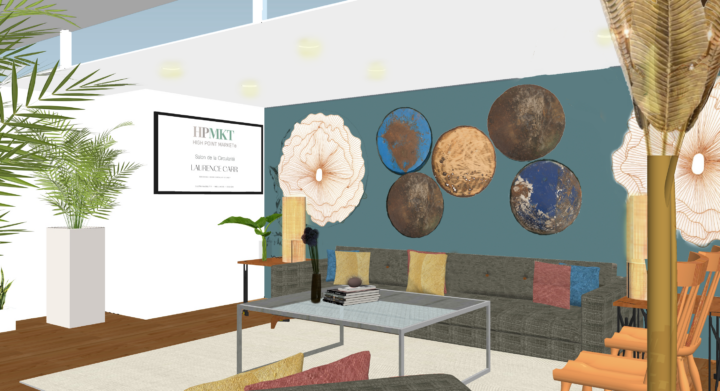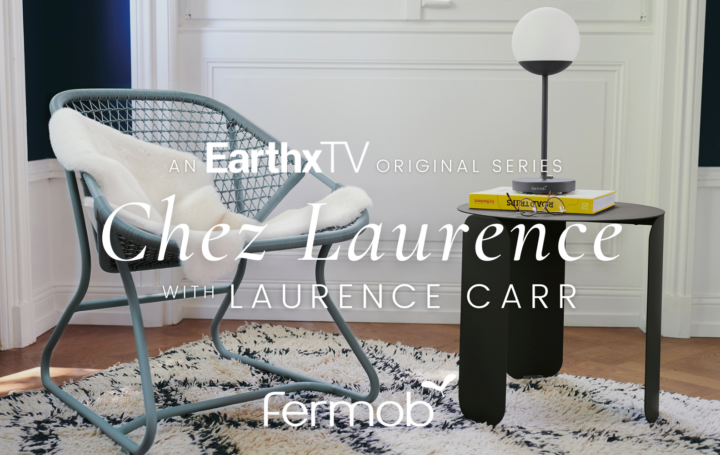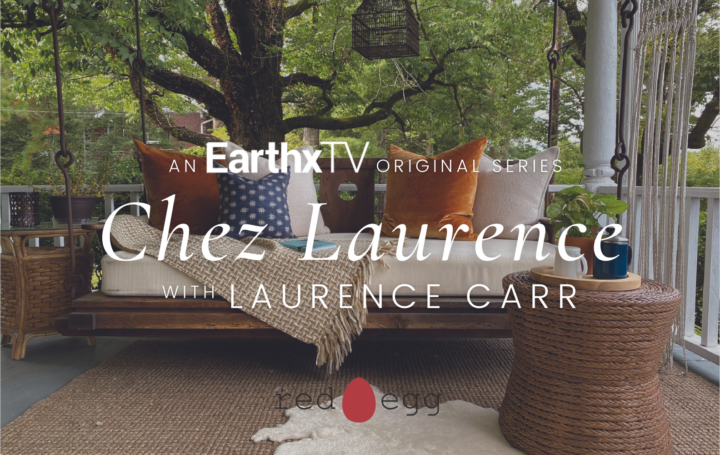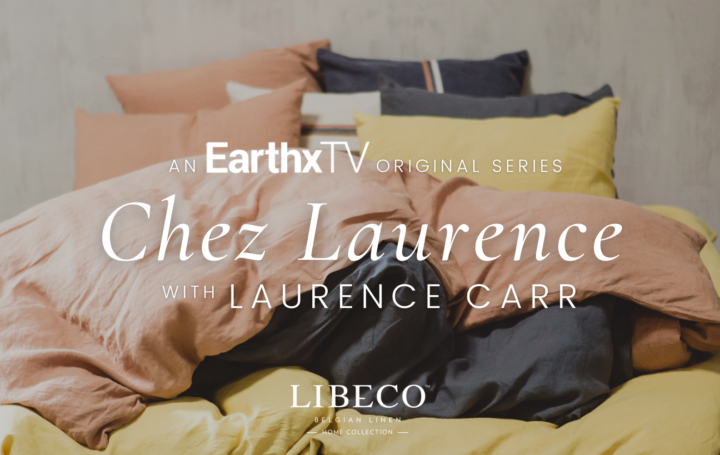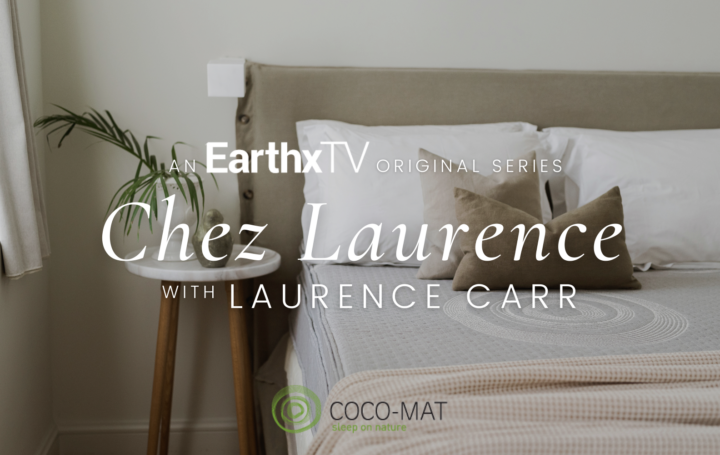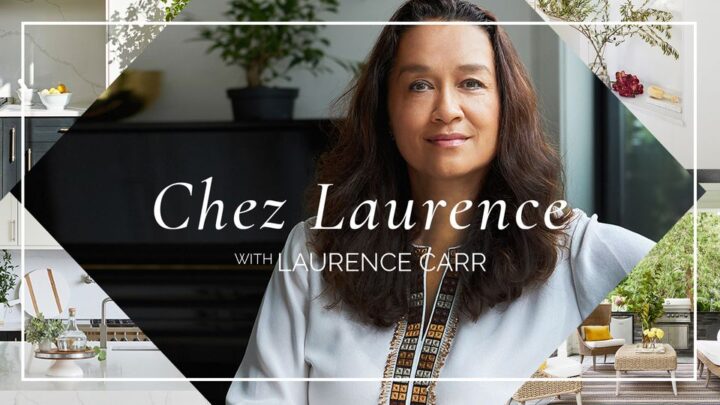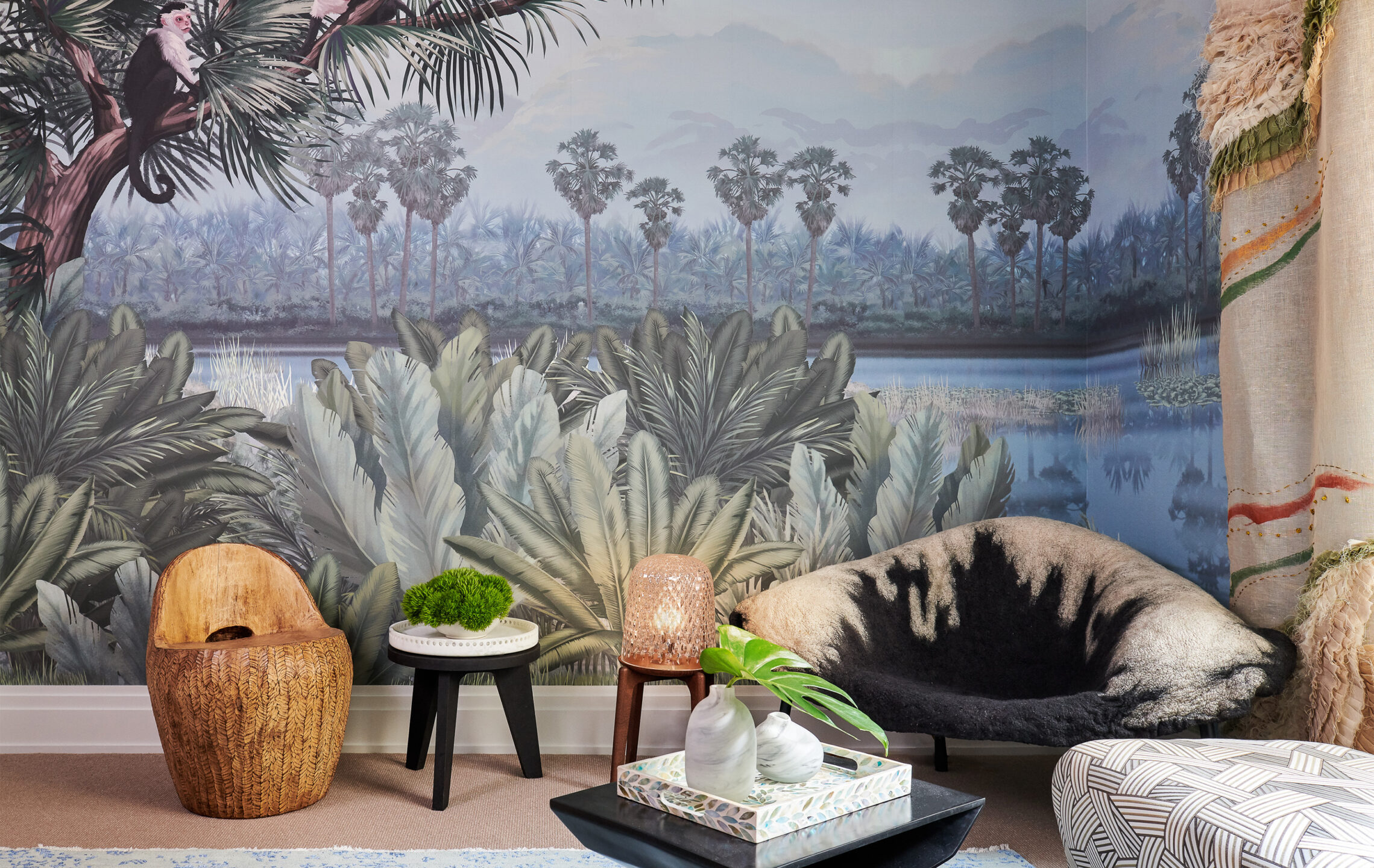
The aspect of sustainable design projects that I find most exciting to share with fellow designers and potential clients alike is the source list. This is because a prevailing challenge to the success of sustainability in this industry is the impression that it might be a daunting task to identify fashionable sourcing options that are truly eco-friendly. So by collectively sharing our sources, we can facilitate sustainability becoming ubiquitous in the interior design industry.
With The Restorative Room project, I was so grateful to work with like-minded vendors whose lines not only go gently on the environment, but also happen to be impossibly chic. Therefore, I am delving into the sustainable details of The Restorative Room, with the intention of introducing you to a few new sustainable sources and some easy ways to include sustainability in your projects along the way!
Eco-Friendly Walls
For The Restorative Room, I sought to bring some of the outdoors in, adding a biophilic serenity to the space, which was short on visual access to the outside world. I mentioned Sofía Willamoës’ wallcovering in my last post, and this sensational mural, Vietnam, is well-deserving of another mention. Sofía, an artist and owner of a wall coverings company in Argentina, views her art as an alchemy that awakens fantasy and imagination in the viewer, and this print certainly embodies that proposition. Vietnam’s combination of blues, ranging from sunny cornflower to steely navy reminiscent of Farrow and Ball’s Hague Blue, bring peace and calmness to the space, while the accents of verdant green support balance and harmony.
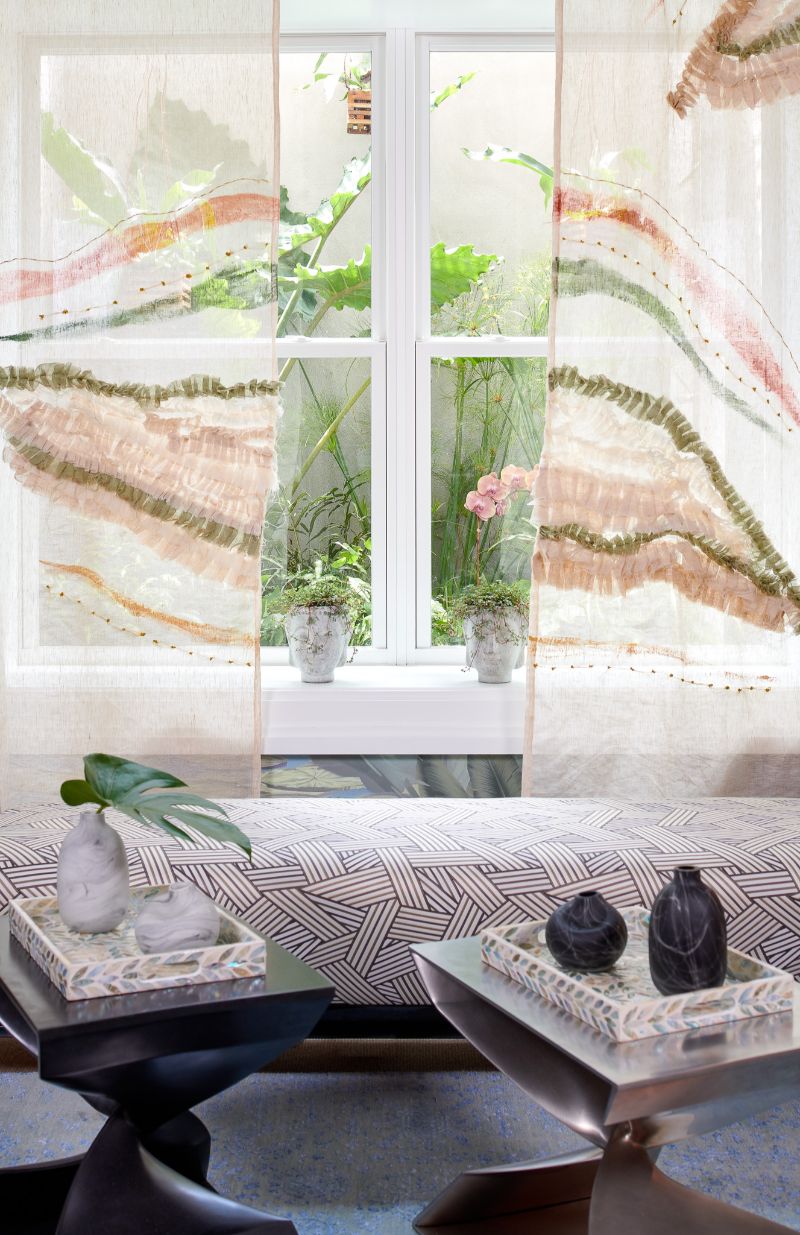
I selected a hue for the ceiling that would allow it to melt sublimely into the jungle below. Next, I drew the slightest pops of earthy warmth out of the vegetation to an accent wall painted a soothing terracotta, which promotes creative energy and reminds me of the red earth soil. Farrow and Ball is my go to paint source, as they not only create beautifully au courant color stories, they were also the first paint source in the industry to move to a water-based formulation, and are constantly introducing new eco-friendly initiatives. The ceiling color is Farrow and Ball’s Pale Powder, and the wall is Red Earth.
Upcycling Furnishings
As relaxation is the intention of this room, the furnishings, especially the seating, were critical to my mission for the design. The space is relatively compact at 224 square feet, and the end use as a den for various forms of restorative contemplation calls for diverse seating options and plenty of room for movement.
Coco-Mat is a vendor I have mentioned previously on the blog, and they continue to an indispensable earth-friendly source. Their line runs the gamut from mattresses to fine furnishings, all made of natural fibers and materials. For The Restorative Room, I upcycled their vintage Diono chair, and reupholstered it in Garrett Leather, which comes from only elite Italian tanneries and gives this piece new life that will make it an essential piece for many years to come.
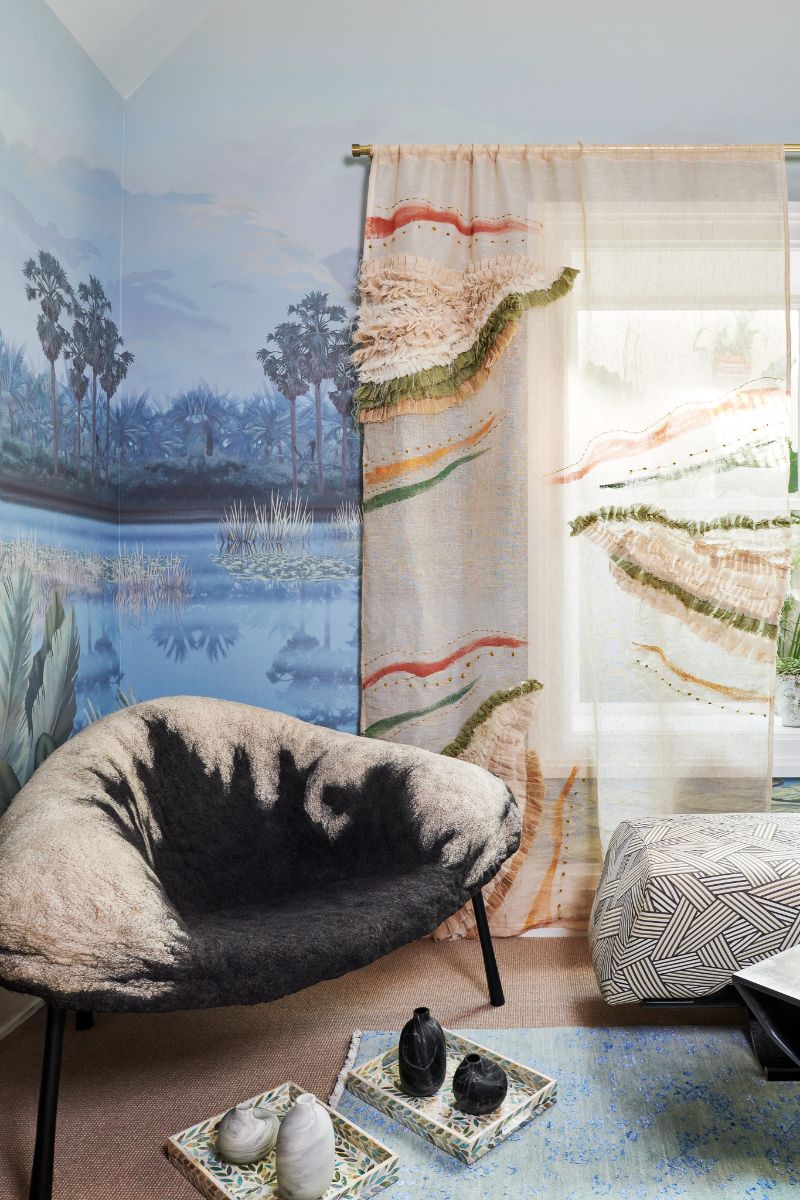
Tucker Robbins, another vendor I recently featured in the blog, supplied his Moon Chair (similar item here) made of reclaimed wood, Porcelain Bangle Side Table, Acacia Spheres, and Snaka Waka Posts. Tucker has been a practitioner of sustainable design for many years, and continues to be a phenomenal example of the global good that flows from this methodology. His workshops in Guatemala, The Philippines, Sri Lanka, Indonesia and Cameroon, utilize reclaimed materials, like sinker logs, in production, and ensure that all parts of the source material are utilized to minimize production waste.
Antiquing for the Greater Good
An aspect of sustainable design that is not to be overlooked is the utilization of antiques, which lends an air of authenticity to our designs. Additionally, the reuse of materials gives our landfills a break and lessens the need for the production of new materials.
Maison Gerard is my preferred source for heirloom-quality furnishings. Maison’s collection of inspiring, museum-quality antiques and contemporary pieces satisfy the most discerning collectors. I was fortunate to have access to some extraordinary pieces for The Restorative Room.
One such piece is the contemporary handmade wool and silk felt lounge chair by Ayala Serfaty, which mimics natural forms like sea bed coral and crystalline rock formations. Along the Red Earth wall, Guy Bareff’s 1942 illuminated stoneware side table adds an unexpected source of tranquil lighting. Centered under the focal point of the back wall is a beautiful custom bench by Achille Salvagni with black lacquer base and lovely blue geometric Dedar upholstery. Simply admiring the rhythmic upholstery could be a form of meditation! Two contemporary stools by Carol Egan, crafted of brushed stainless steel and blackened bronze, add elements of clarity and peace to the space. And in further support of the mission of upcycling, the Garrison series sculptural stool adjacent to Tucker’s Moon Chair was crafted of reclaimed rebar from the decommissioned Garrison Bridge in Ontario.
Sourcing antique rugs can present authenticity challenges. Tepp Team is a rug dealer that has been in the business of sourcing antiques around the world for over 65 years, and I utilize them for many of my designs. For this project, I pulled a contemporary silk and wool rug from India called the Jewelry Rug with a serene azure print on pale blue ground that ties into the mural and ceiling above.
English Country Antiques, a Hamptons staple owned by a former fashion and interior design photographer, supplied accent pieces to round out The Restorative Room. Two of my favorite finds are the white porcelain salt statues that sit inside the St. Louis Folia Console bringing a color contrast against the warm ash wood grain. Additionally, the organically shaped glass vases add an element of wabi-sabi with their muted tones and imperfections which enhance the relaxing environment within.
Finding truly sustainable interior design sources can feel intimidating, however the market is expanding at a rapid pace, and our options are not limited to new production. Sharing our eco-friendly sources is an excellent way to continue the conversation and expand awareness on how our industry impacts the environment. The more we know, the better we can be, and my hope is that we all continue to strive for sustainability in our design projects. Please do stop by Laurence Carr Design’s The Restorative Room for the 2019 Hampton Designer Showhouse for a closer look at the sustainable details therein.
Who are your go-to sustainable interior design vendors? I would love to keep this conversation going in the comments below!

